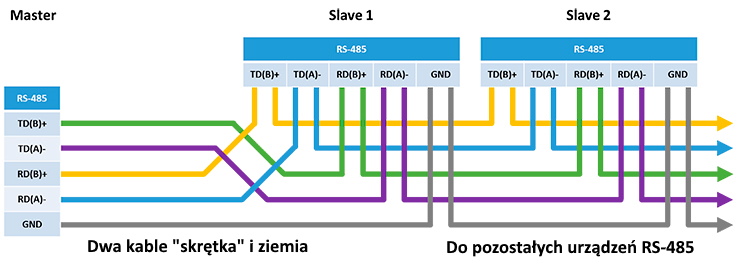Main differences between RS-232, RS-422 and RS-485 (part 3)
Description of the interface RS-485
In industry, the RS-485 interface is most commonly used because it uses a multi-point topology that allows you to connect multiple receivers and transmitters.
The RS-485 interface is similar to the RS-422 because it also uses a differential signal to transfer data.
There are two types of RS-485:
RS-485 with 2 pins, works in half duplex mode
RS-485 with 4 pins, full duplex
In full duplex mode, you can receive and send data simultaneously, and in half-duplex mode, you can send or receive data.
In one segment of the RS-485 network there can be up to 32 devices, but with the help of additional publishers and signal amplifiers up to 256 electronic devices. Only one transmitter can be active at a time.
The speed of operation also depends on the length of the line and can reach 10 Mbit / s on 10 meters.
Voltage on lines ranges from -7 V to 12 V.
The RS-485 standard does not define a specific type of connector, but it is often a terminal strip or DB9 connector.
The way of connecting the RS-485 connector depends on the device manufacturer and is indicated in its documentation.
Connect RS-485 devices with 2 pins.

Connect RS-485 devices with 2 pins.

To coordinate lines over long distances, RS-485 also places 120 Ohm terminating resistors at the beginning and end of the line.
How to check the operation of RS-485?
If you have a device with RS-485 and want to test it, the easiest way is to connect it to your computer using the RS-485 to USB converter and use dedicated software.




